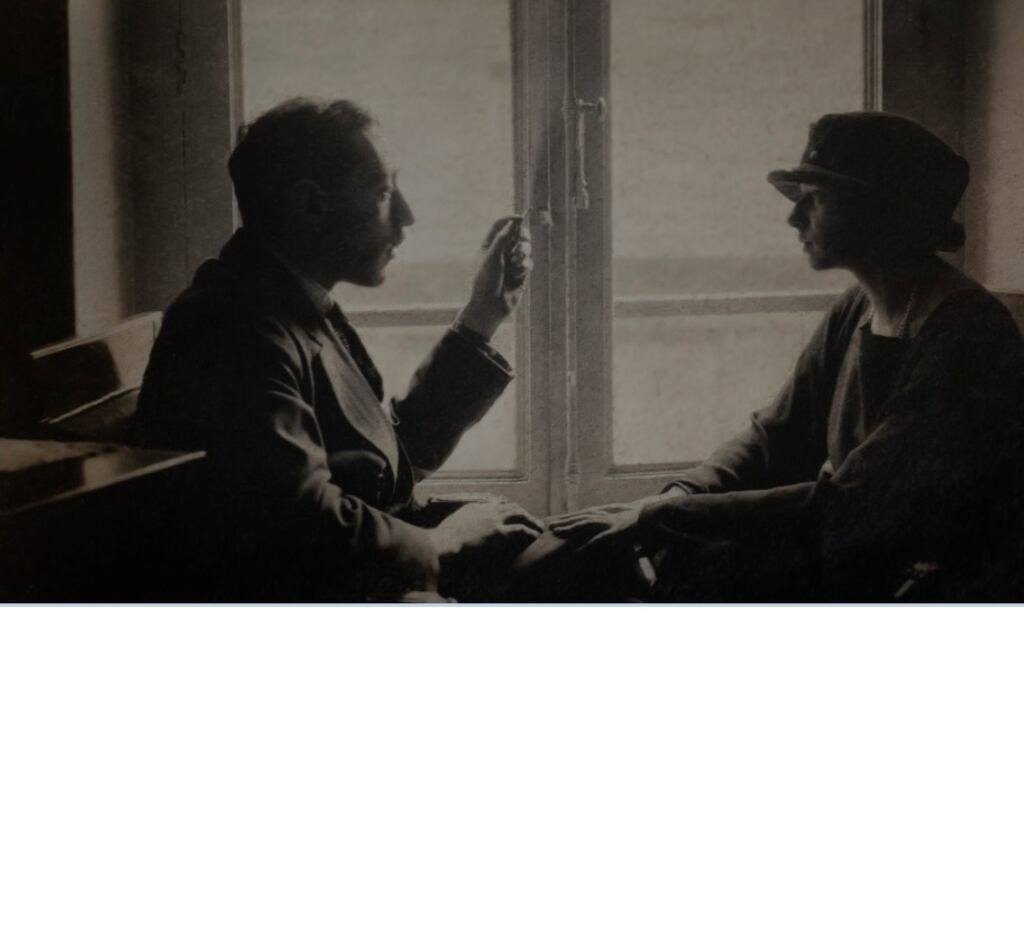James Joyce met Paul Léon in 1928, six years after the publication of Ulysses. “When Joyce learned that Paul’s middle name was Leopold (like Leopold Bloom, the everyman hero of Ulysses), he thought it was fortuitous,” says Luca Crispi of the James Joyce Research Centre at University College Dublin. “Joyce always thought that fate would bring him people and things that he needed to fulfil his work. Bloom’s middle name is Paula, which makes the coincidence more striking.”
Bloomsbury’s Modern Archives Series has just published James Joyce and Paul L Léon: The Story of A Friendship Revisited. The book was co-edited over two decades by Crispi, Alexis Léon, the late son of Paul, and Alexis’s widow Anna Maria Léon.
Paul Léon was the son of Jewish grain merchants from St Petersburg. Ambassador Niall Burgess, who launched the book at the Irish Embassy in Paris on January 25th, described Léon as “a philosopher, linguist, man of letters, warm friend and close collaborator of James Joyce”.
Joyce visited the Léons’ apartment at 27 rue Casimir Périer in Paris nearly every day of the 1930s. Léon spent thousands of hours resolving the mundane details of Joyce’s life: contracts, publishers, correspondence, to enable Joyce to write unhindered.
Sherlock Homes and a curious tale of fiddles, bagpipes and the trees of Cremona
Broad church – Alyson Gavin Lysaght on the Anglican Church of St John the Evangelist in Sandymount
Confounding Father - Frank McNally on the centenary of a radical Irish-American priest.
The Irish (and Redmondite) origins of the Augusta National Clubhouse
Joyce was going blind, so Léon transcribed and corrected the manuscripts of Finnegans Wake, reading aloud to Joyce. He always refused to be paid. Léon was “most interested,” he said, “in watching Joyce’s process of creation ... his mental process and the metamorphosis of language he indulges in.”
Léon’s wife Lucie was from Moscow, where her family owned textile factories. She said she fell in love with Paul when she saw him dancing on a beach in Finland, after both fled the Bolshevik revolution.
When the Germans invaded Paris in June 1940, the Léons and Joyces sought refuge in St Gérand-le-Puy, central France. Every morning, Paul’s wife Lucie recounted in her memoir, included in the new book, Joyce would rap on the fence with his cane to fetch Paul. The two writers “would stroll together, arm in arm ... They found a tree which had been felled in a convenient position, and they spent a good deal of time sitting there – sometimes talking, but often in silence.”
The Léons decided to return to Nazi-occupied Paris, because they needed Lucie’s salary as fashion correspondent for the New York Herald Tribune, and because it was time for Alex to sit his baccalaureate examination.
Joyce made his way to Zurich, where he died on January 13th, 1941.
Paul Léon repeatedly crossed the Seine to rescue Joyce’s personal papers from the writer’s last Paris apartment, at 34 rue des Vignes in Passy. “There was a curfew and Jews were not allowed to travel in streets at night,” Crispi recounts. “Paul would go at night with the porter and a wheelbarrow. He told Joyce’s concierge they were his things he was taking. He went back and forth many times, because there were hundreds of books, thousands of pages of manuscripts. Every time he went, he put his life at risk.”
Léon entrusted 50 manila folders containing documents from Joyce’s flat to the Irish legation in Paris. They now belong to the National Library of Ireland. His son Alexis found still more precious manuscripts in storage in 2000. They too were donated to the National Library.
The Gestapo arrested Paul Léon in Paris on August 21st, 1941. Over the next six months, he and Lucie exchanged heart-breaking love letters in which he recounted the hunger and cold, fleas, ill health and despair of the internment camps at Drancy and Compiègne, from which 64,000 French Jews were deported to Nazi death camps.
Alexis also found his parents’ letters, which Anna Maria intends to donate to the Holocaust Memorial Museum in Washington DC.
“When we read those letters, often written on tiny pieces of paper, Alex and I embraced and could not stop sobbing,” Anna Maria Léon said.
The letters have been translated into English by Mary Gallagher, professor of French at UCD, and are published for the first time.
Ambassador Burgess linked the book launch to observance of World Holocaust Day on January 27th. “Luca Crispi and Mary Gallagher have made an Irish scholarly contribution to Holocaust studies,” he said. “This is a newly told Holocaust story with a very strong Irish dimension.”
“Darling, we’ve been counted and tomorrow we leave,” Paul Léon wrote to Lucie on March 26th, 1942. “I hope I will see you again, but I don’t have much hope ...The most important thing for me is to tell you that I love you as much as I did 20 years ago and that, if I don’t see you again, it is you I shall love forever.”
Paul Leopold Léon was murdered on a death march from Auschwitz to Birkenau on April 4th, 1942.















